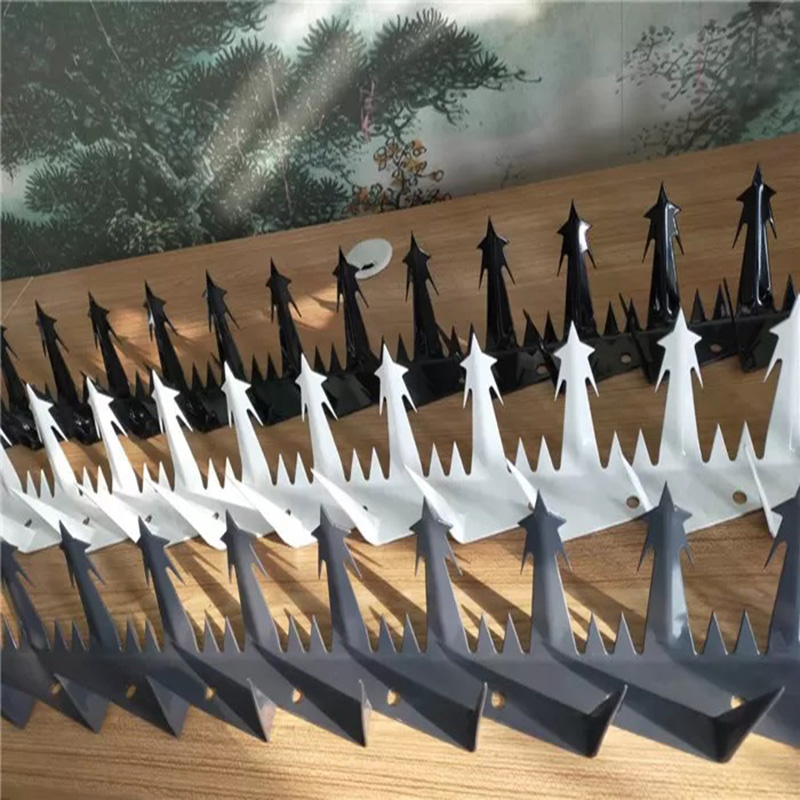-
+86 15030157877
-
sales@galvanizedmetalmesh.com
Oct . 18, 2025 12:15 Back to list
Anti Climb Wall Spikes – Galvanized Steel, Easy Install
A Field Guide to Choosing Anti-Climb Wall Spikes That Actually Work
If you manage a perimeter, you already know the awkward truth: deterrence is half psychology, half metallurgy. That’s why I keep coming back to anti climb wall spikes—a small line item that can quietly shift the risk calculus for would‑be intruders.

Industry snapshot (and why it matters)
Budgets are moving from guards to passive layers—razor spikes, detection cables, smarter lighting. Facilities in logistics, utilities, and education tell me they want “fit‑and‑forget” measures. With anti climb wall spikes, that usually means hot‑dip galvanizing, clean stamping, and mounting holes that line up so installers aren’t re‑drilling on a windy scaffold. Sounds basic, but it’s where projects win or lose.
What this product is (and isn’t)
Wall Spike (often called razor spikes) is a cactus‑like strip—sharp fins on a steel base—fixed along the top of a wall or fence. It’s available in three flavors: Max, Middle, and Small. From South Industrial Zone 07, Anping County, Hebei, China—yes, the global home of wire and mesh—the manufacturing competency is real. Many customers say installation is a one‑person job with a cordless driver; I’ve seen crews hit 120 m per day on a straight parapet.

Typical technical flow (what I ask vendors)
- Materials: Q235 low‑carbon steel or SS304 (≈1.5–2.5 mm base plate; spikes ≈2.0–3.0 mm at root).
- Process: Coil cutting → CNC stamping → deburring → passivation → hot‑dip galvanizing (ASTM A123/A153) → optional polyester powder coat (AAMA 2604).
- Testing: Salt spray 500–1000 h (ISO 9227 / ASTM B117); coating adhesion; burr height check; hardness (HV); random destructive bend test on base flange.
- Service life: ≈10–20 years outdoors; coastal or industrial sites trend to the low end unless powder coated.
- Industries: Logistics parks, data centers, substations, schools, residential compounds, rail corridors.
Product specs (common, real‑world)
| Type | Spike height | Base thickness | Length/strip | Material & finish |
|---|---|---|---|---|
| Max | ≈110–120 mm | 2.0–2.5 mm | 1.25–1.5 m | Q235 HDG; optional powder coat RAL |
| Middle | ≈80–90 mm | 1.5–2.0 mm | 1.25–1.5 m | Q235 or SS304; HDG or powder |
| Small | ≈50–60 mm | 1.2–1.5 mm | 1.25–1.5 m | SS304 for coastal; brushed or coated |

Applications, little gotchas, and signage
Use anti climb wall spikes on parapets, palisade rails, chain‑link top rails, and gate leaves (hinge side especially). On schools and public paths, add visible warning signs and maintain safe mounting height per local guidance—this is non‑negotiable. Surprisingly, a contrasting powder coat (yellow/black) increases stand‑off distance more than you’d think.
Vendor comparison (condensed)
| Criteria | GalvanizedMesh (Anping) | Vendor A | Vendor B |
|---|---|---|---|
| Base steel | Q235 / SS304 | Q195 | Q235 |
| Coating mass | HDG ≈70–100 µm | Electro‑galv. ≈10–15 µm | HDG ≈60 µm |
| Edge finishing | Machine deburr + QC | Manual, variable | Machine deburr |
| Lead time | 7–15 days | 15–25 days | 10–20 days |
| Certs | ISO 9001; lab salt‑spray reports | None listed | ISO 9001 |
Customization that’s actually useful
- Hole patterns to match palisade posts (no on‑site drilling).
- RAL powder colors for visibility or camouflage.
- Stainless variants for coastal rails; blunt‑tip options where policy requires.
Mini case notes
Logistics park, EU: 1,200 m Max type; breach attempts dropped to zero in 90 days. Security manager said the “visual sting” mattered more than cameras.
Public school, MENA: Small type on 2.2 m block wall with high‑vis signage; no injuries, fewer after‑hours roof climbs (anecdotally ≈80% down).
Telecom rooftop, APAC: Middle type; powder coat RAL 7016. Passed 720 h salt‑spray with no red rust on cut edges.

Quick compliance checklist
- Corrosion: specify HDG to ASTM A123/A153 or equivalent.
- Testing: request ISO 9227 or ASTM B117 data (hours to red rust).
- Integration: consider overall system rating (e.g., LPS 1175 layer strategy).
- Signage and height: follow local safety guidance for deterrent devices.
To be honest, you don’t need to overthink anti climb wall spikes. Get the metal right, the coating honest, and the install tidy—and they’ll quietly do their job for a decade or more.
References
- ASTM A123/A153: Zinc (Hot‑Dip Galvanized) Coatings on Iron and Steel Products.
- ISO 9227: Corrosion tests in artificial atmospheres — Salt spray tests.
- BRE LPS 1175: Requirements and testing procedures for intruder resistant products.
- AAMA 2604: Voluntary Specification, Performance Requirements and Test Procedures for High Performance Organic Coatings on Aluminum Extrusions and Panels.
- HSE (UK): Managing risks from deterrent devices on perimeters (general guidance; signage and height considerations).
- ASTM B117: Standard Practice for Operating Salt Spray (Fog) Apparatus.
-
Durable Fence Barbed Wire Solutions for Global Security & Agriculture
NewsNov.24,2025
-
Comprehensive Guide to Barbed Fence Wire – Durability, Uses & Innovations
NewsNov.23,2025
-
Barb Wire Price Per Roll – Understanding Costs, Trends & Global Applications
NewsNov.22,2025
-
Stainless Steel Barbed Wire: Durable Security for Global Industries & Relief Efforts
NewsNov.22,2025
-
Comprehensive Guide to Razor Wire Prices: Factors, Trends & Vendors
NewsNov.21,2025
-
Concertina Razor Wire: The Ultimate Guide to Secure, Practical Barrier Solutions
NewsNov.20,2025



